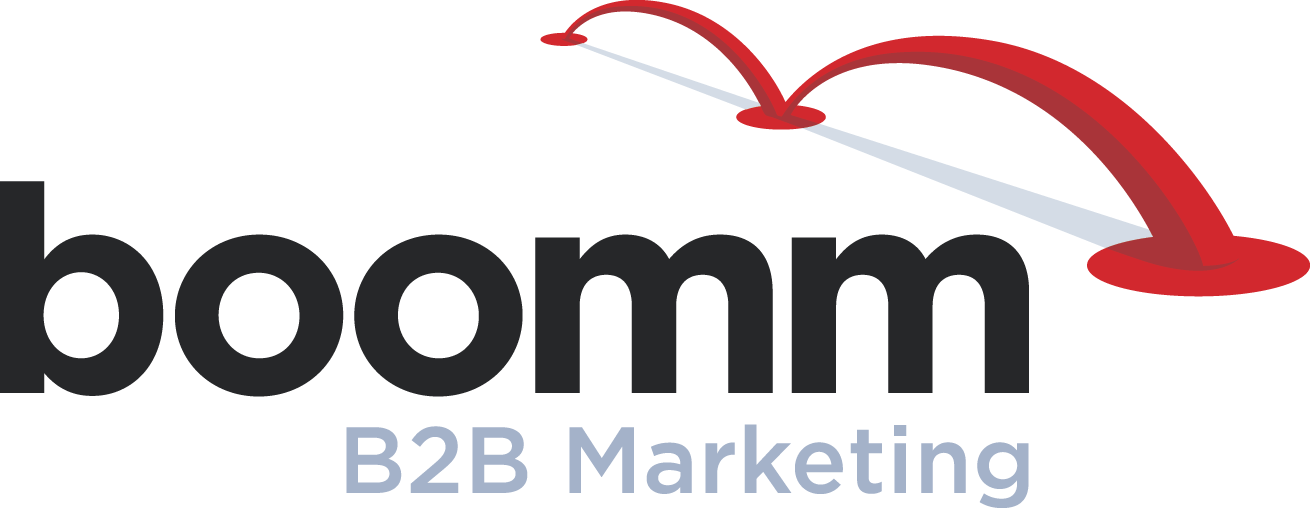True-life B2B horror stories
Boomm celebrates Halloween in a big way. One year, we held a scary story contest that resulted in some remarkably imaginative entries. Another year, our CEO Gary Mattes created a lighted sign that eerily glowed “BOO,” until the letters “MM” illuminated to complete the agency name. But the most frightening memories by far are from our old, haunted offices in La Grange. Boomm employees still whisper about “The Twins,” our resident ghosts. These spectral sisters were always making unexplained noises, knocking objects off shelves, rumbling about in the dusty attic, or triggering car alarms during client calls. The Twins made working late at Boomm an adventure for the brave hearted. In the spirit
Big show or no show? How foodservice trade shows factor into purchase decisions
Before social media and mobile. Before videos and blogs. Before all of today’s countless ways to connect there were foodservice trade shows. And for busy industry decision makers, these events were an essential source for keeping up with trends, innovations and colleagues. Foodservice trade shows were also the place to learn about new products, menu options and technology. These purchase decisions were important enough that operators needed to do a little homework, ask a few colleagues, and compare choices first hand. But times have changed. This is an age of instant information and online research. Does that mean foodservice trade shows no longer influence decision makers’ purchase decisions? The answer to that important
What Makes Non-Commercial Foodservice Operators So Different?
Q. How can you tell commercial and non-commercial foodservice operators apart? A. Don’t bother trying. That might sound like a bad joke, but it’s actually the strategy for too many foodservice marketing campaigns. Faced with the daunting challenge of segmenting decision makers, the fallback reaction seems to be to lump non-commercial foodservice operators in with their counterparts. That’s not surprising because commercial foodservice is the industry’s largest and most recognizable segment. But non-commercial operators are a force in their own right. And marketers cannot afford to neglect these decision makers or ignore their distinct differences. Which brings us to an even more challenging question: Q. How can you connect with non-commercial foodservice operators on their terms? A.
The Ultimate Food Fight: Foodservice Trade Publications in a War
When you hear the term “food fight,” what comes to mind? Perhaps you think of John Belushi and his Animal House buddies heaving cafeteria entrees at their fraternity rivals. But a much more serious food fight is being waged between competing foodservice trade publications and websites. And the stakes are certainly higher. Foodservice magazines and websites are competing fiercely for the attention of operators, and for many titles, it’s the fight of their lives. That’s because operators have very little time to spare and trade media is not high on the priority list. So the battle rages on and intriguing questions surface: Which foodservice trade publications are operators reading? How often do they use the titles? Do
The Most Influential Force in Foodservice: Who Really Guides an Operator’s Decisions?
Foodservice is one of the largest, most significant and most important industries in the nation. According to the National Restaurant Association, it is estimated that 14.4 million people will be employed in foodservice this year alone. And restaurant employees total 10% of the entire workforce in America. Clearly, the industry is a major force. But who holds the keys to the kingdom? In other words, who is the most influential figure in foodservice? You may think it’s a nationally recognized celebrity chef who helps shape the latest taste trends. Or it could be a well-connected industry lobbyist who helps advocate for important legislation. Or it might even be the CEO of a global chain
B2B Email Design That Makes Your Customers Want to Click
Despite many predictions about the death of email, it’s still going strong. Email is the cornerstone of many omnichannel marketing campaigns because it’s highly targeted, cost-effective, trackable, and relatively inexpensive to produce. It provides instant gratification for recipients, who can chose to click through or delete in an instant. Often, the difference between an email that a prospect follows through on and an email that’s relegated to the trash bin hinges on its design. And this involves much more than graphic sensibilities. Exploring some principles of good B2B email design can help you reach your customers more effectively and ensure that they follow through on your emails. Here are a few
B2B Webinar Best Practices to Wow Your Audience and Generate Leads
Many B2B companies are starting to include webinars as part of their marketing mix. And it’s a smart move—webinars generate leads, demonstrate thought leadership, and build up content that can be used in the future. But a great webinar isn’t something you can just throw together. It takes careful planning and targeted promotion. Let these webinar best practices guide your planning: Determine what you want your webinar to be. What are your objectives? What content do you want to cover? Who do you want to target as your audience? How do you want to present your content? Answer these questions in a concrete and specific way and develop a strong plan
Inbound and Outbound Marketing: What You Need To Know
B2B marketing generally falls into one of two categories: inbound or outbound marketing. These two terms get thrown around a lot, with some marketers suggesting that inbound is the strategy of the future and outbound is outdated. But is this belief valid? And what do these terms really mean? This blog post will break down inbound and outbound marketing, including the benefits and drawbacks of each strategy. Outbound marketing is what most people think of when they think of marketing: paying to put your message in front of an audience. It includes print ads, digital banners and pop-ups on websites, direct mail campaigns, broadcast advertising, outdoor advertising and cold calling. Outbound
Best Practices for Better B2B Email Subject Lines
Getting your B2B marketing email into your customers’ inboxes is only half the battle. Once it’s there, you have to convince them that it’s worth their while to open it, read it, and click on your links. Whether they open your email or not usually has a lot to do with your subject line. Here are a few best practices for creating B2B email subject lines that stand out and attract clicks from your customers: Avoid words that trigger spam filters. Many spam filters are triggered by specific words and phrases as well as email frequency and email source. For instance, “Free Ebook!!!” seems like a good, compelling subject line, but
5 Important Inbound Marketing Facts From the “State of Inbound” Report
How well do you know inbound marketing? Inbound marketing is a way of attracting individuals to your brand and converting them into customers through content creation, social media, and other strategies that demonstrate relevance to their lives. It’s been increasingly adopted by marketers over more traditional, outbound techniques like cold-calling and paid advertising because of its lower cost and its ability to draw in more qualified prospects. Every year, Hubspot, a leading marketing and sales software platform, surveys thousands of marketers to generate research on the use of inbound marketing. The company’s 2015 “State of Inbound Marketing” report reveals new insights on how marketers around the world are practicing inbound marketing






